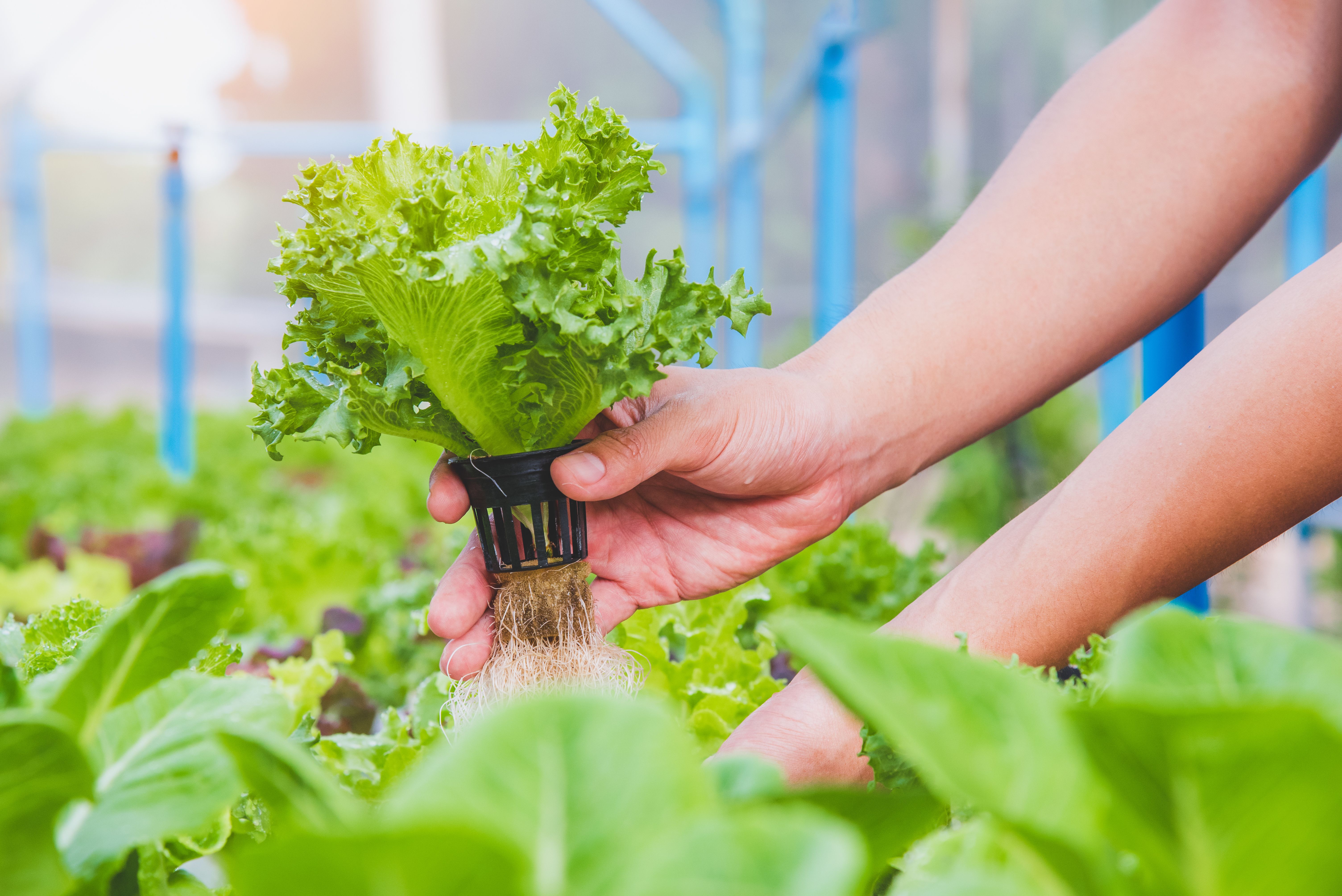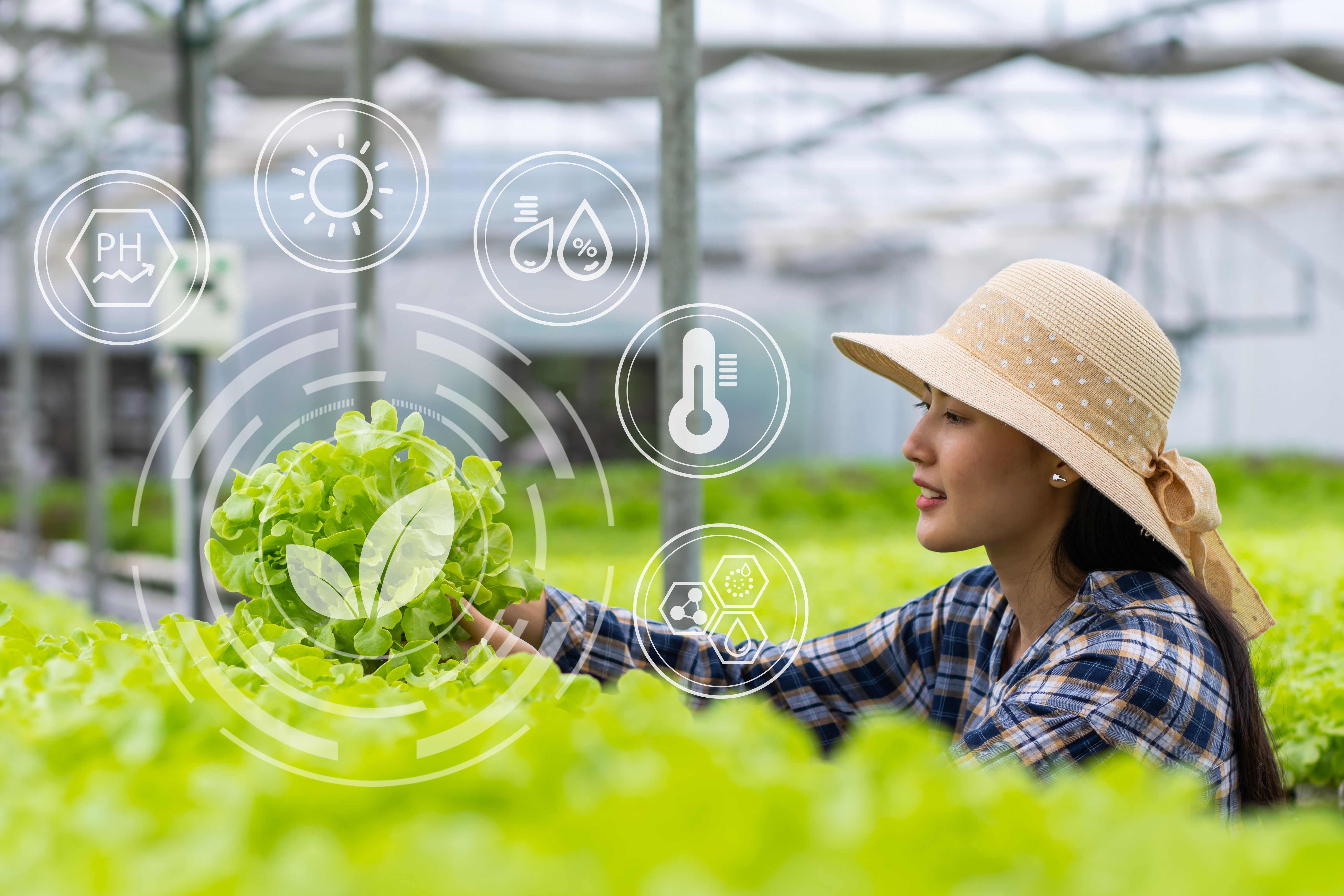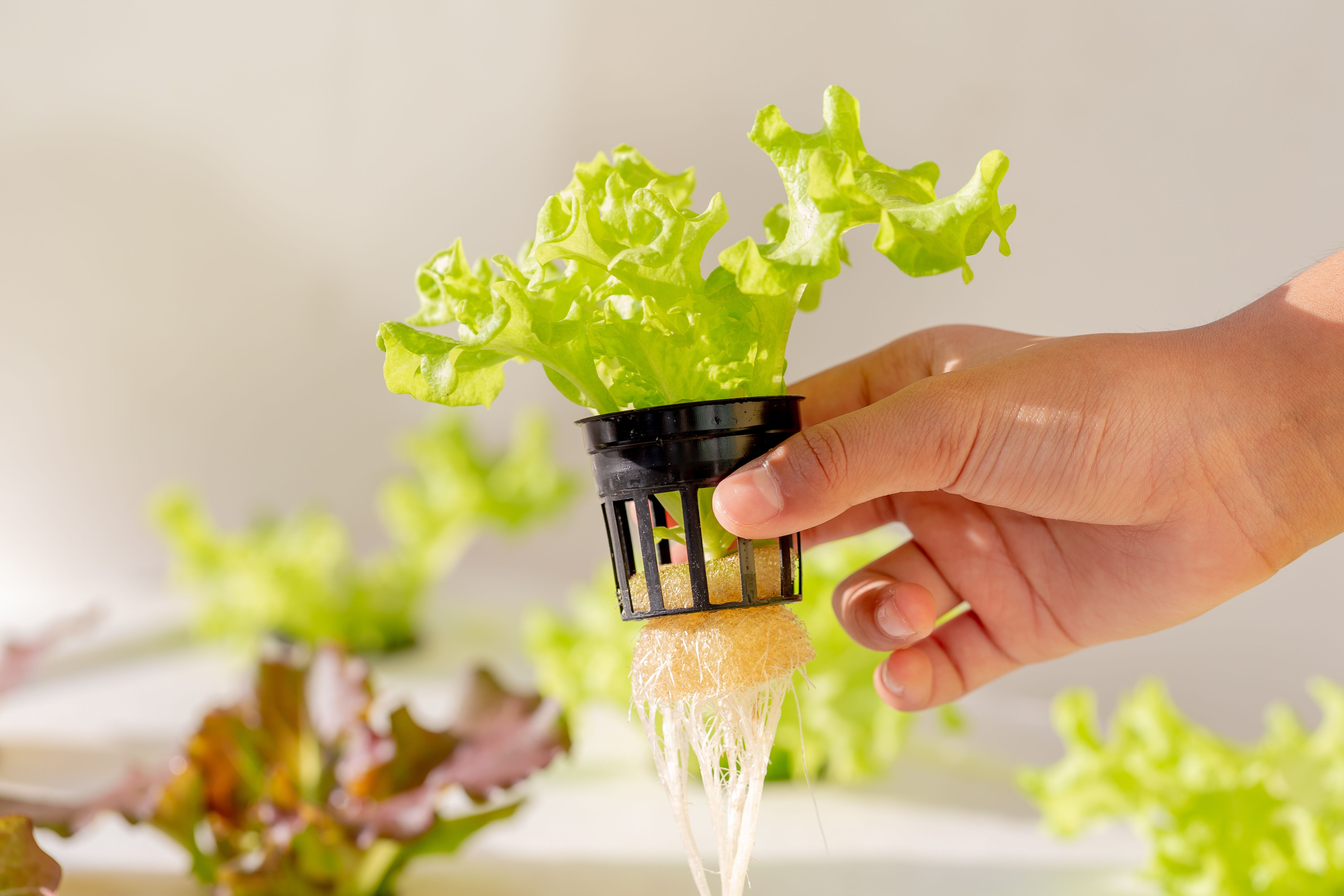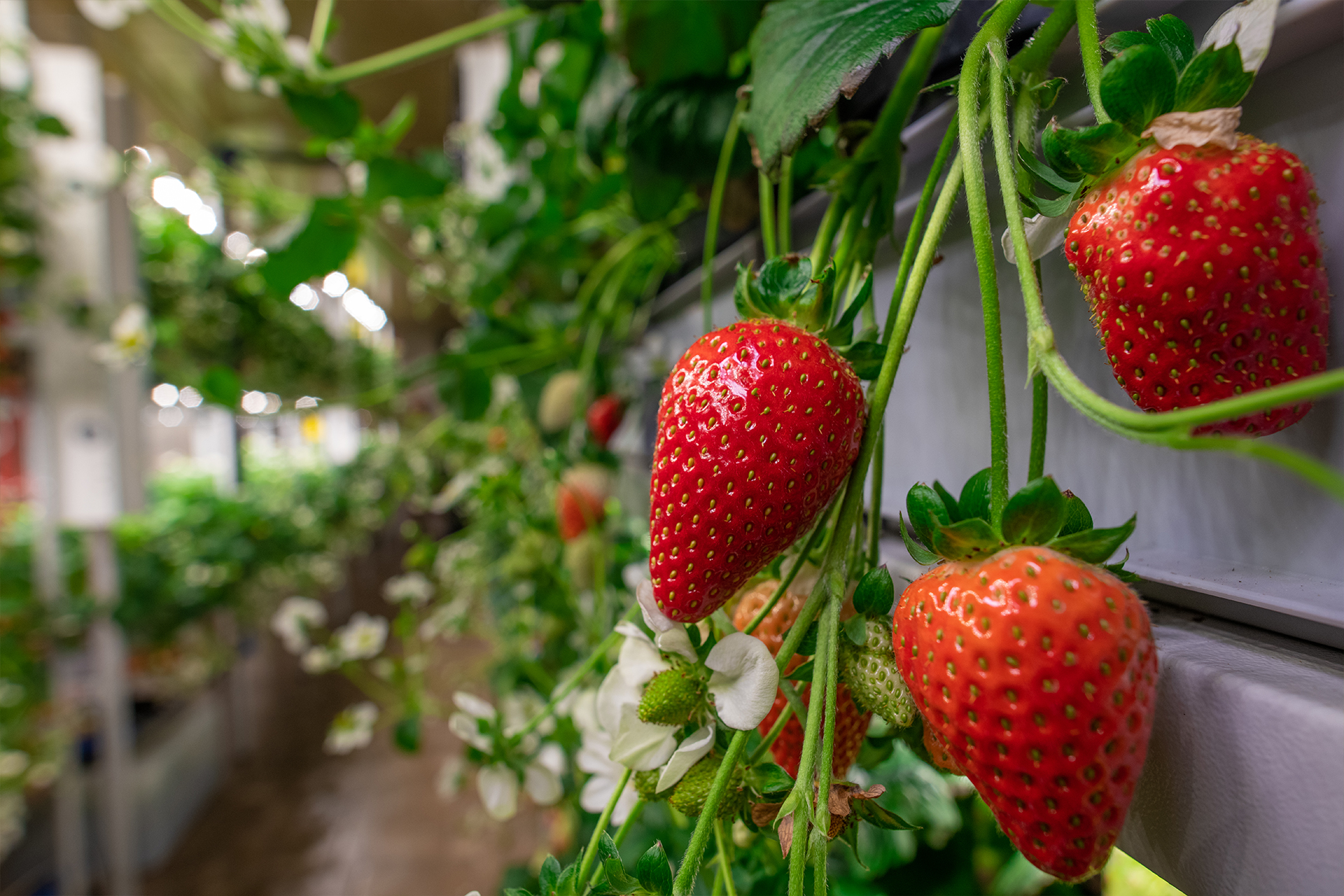If you are new to growing things, you may not know about all the different ways people have devised to grow indoors without soil. Many of the systems that are currently offered to consumers rely on a method called Hydroponics. While conventional gardening and farming rely on plants spreading roots into soil, to gather the nutrients they need to grow, hydroponics replaces this process by delivering the nutrients directly to the plant roots via a nutrient solution.
Hydroponics is further divided into three categories based on whether the nutrient solution is in the form of a liquid, mist, or fog. In a true “hydroponics” system, a liquid nutrient solution is either dripped over the roots, or the root chamber can be flooded and drained on an intermittent basis, the liquid can be continuously pumped through the chamber and flow over the ends of the roots, or in a passive system, the roots just grow into a container full of solution. Hydroponics is popular for growing lettuce and other leafy greens.
The Most Efficient Method Yet
Aeroponics, on the other hand, and “fogponics” both spray the nutrient solution directly onto the roots. The “fogponics” approach nebulizes the nutrient solution into a fog that continuously wets the roots. Aeroponics, in contrast, sprays a very fine mist on a regular schedule, then allows the plants to absorb the nutrients before the next spraying, which supplies both a high level of nutrients and high oxygen levels, making it the most efficient method yet devised for cultivating plants.
NASA Approved
The droplet size has been extensively studied by NASA, who were interested in finding the most efficient method for growing plants in space and conducted years of research into aeroponics because of how efficient it is with nutrients and water. NASA needs to minimize the weight of materials that have to be carried on long space missions, so they need a growing technique that is the most efficient method and requires the least amounts of materials. They also need to grow potatoes. We’ll come back to that in a bit. NASA’s testing revealed that the highest nutrient uptake occurred when the spray particles were between 20 and 50 microns. This resulted in the fastest growth and the largest plants.
Purchase one of our grow towers and put a produce section in your home today.
AEROPONICS DEFINED
The word “aeroponics” is a combination of two Latin root words meaning “air” and “work”. The “aero” in Aeroponics refers to the fact that the plant roots grow in air. The roots are periodically sprayed with a nutrient solution that delivers all the macro- and micronutrients the plants need to grow. Turns out that this method has many, many benefits.
15 BENEFITS OF AEROPONICS
1. Better utilization means lower cost
Aeroponics uses 30% less nutrient solution than hydroponics. In today’s world, fertilizers and nutrient solutions are becoming harder to find, so you want a method that makes the most of your hard-earned dollars. By spraying a fine mist onto the roots, all the root surfaces are saturated with nutrient solution, not just the tip ends, as with many hydroponic systems. This key difference between aeroponics and hydroponics increases the amount of nutrients that plants absorb and results in less waste and lower cost. And it yields multiple additional benefits.
2. Roots get more oxygen
More oxygen means faster growth. Because there is no grow media, the roots are fully exposed to air, and they love it. Plants grown using aeroponics grow significantly faster than plants grown conventionally – in some cases 2-3 times faster. Many lettuces are ready in 15-20 days (about 3 weeks)! So, in no time at all, you will be harvesting fresh fruits and vegetables.

3. Larger Growth, Bigger Yield
For both leafy greens, herbs, and fruiting plants, like tomatoes, cucumbers, and peppers, aeroponics produces larger plants and more fruit. This is the result of both the higher nutrient availability from misting the entire root structure, and the higher oxygen availability from growing in air. Get greater yields from every plant and minimize your effort.
4. Totally Organic
Growing in a controlled environment makes pest control much easier, so you probably won’t even need to spray your plants. And there are organic solutions for pest control so you can be sure you don’t ingest anything harmful.
5. More Variety
Aeroponics has been successfully used to grow the widest variety of plants. Remember NASA’s desire to grow potatoes? Potatoes are a highly desirable crop as a food source for astronauts on lunar and Martian bases. Remember the movie, "The Martian"? Mark Watney was able to survive on potatoes, and very little else. Aeroponics is highly successful for growing root vegetables such as potatoes, carrots, beets, onions, and radishes. Because the roots have time to almost dry between mistings, aeroponics eliminates the risk of roots rotting from sitting in a pool of hydroponic nutrient solution.
Aeroponics is used to produce seed potatoes on a commercial scale, and it typically produces up to 10 times the number of seed potatoes compared to conventional methods. Aeroponics allows you to Grow Anything™.

6. Healthier plants, better for you
Plants eaten within hours – or even minutes – of harvesting contain the highest possible levels of nutrients. These nutrients are lost over time, and as much as 30-50% of the nutritional value of leafy greens – even organic – can be lost in as little as 3 days after harvesting. And some growers report that plants grown aeroponically are stronger and have higher nutrient content due to the extra oxygen that helps the plants absorb more nutrients through their roots.
7. Less risk of disease spread
In most hydroponic systems, all plant roots are all in contact with the same water, allowing disease to quickly spread from one plant to all the others. Aeroponics isolates the individual root systems and eliminates this risk.

8. No soil or other messy growing media
Many hydroponic systems have plants that are growing in pots filled with some sort of media – lightweight pebbles, coconut coir, or some other substance. Aeroponic's media is air. No mess, less material to buy, and nothing to confine the plant’s root system.
9. Easy to maintain
There are very few parts to an aeroponic system, and only a couple of things to keep up with.
Nozzles can get plugged with foreign particles, but good filters built into the system can eliminate or greatly reduce this issue. And nozzles can be easily removed, cleared, and reattached.
Maintaining the nutrient solution is also simple. A couple of quick tests of the nutrient solution every few days is all that is required, and making adjustments is just a matter of adding a few ounces of liquid solution or dry granules to the reservoir and topping off with additional water.
Virtually all hydroponic systems rely on pumps, which means they also rely on electricity to run those pumps, and aeroponics is no different. A good battery backup system is all that is required to ensure continuous, uninterrupted operation of your system.
10. Start new plants from cuttings
Professional growers have great success starting new plants from cuttings by using aeroponics, because every little budding root has access to nutrients.

11. Automated
You don’t have to worry about keeping up with watering or feeding your plants -the system takes care of that, saving you precious time.
12. No transplant shock
Plants that are started in an aeroponic system don’t suffer from transplant shock, making aeroponics a great way to get an early start with your outdoor gardening by sprouting your seeds indoors so they are ready for transplanting when the weather warms up.
13. Great Space Utilization
Depending on the system, it is very easy to grow 25-100 plants in a very small footprint. By stacking growing decks vertically, many more plants can be grown in a small space, often no larger than a typical bookshelf unit.

14. Cleaner produce
Plants stay cleaner than if you were growing them in the dirt, where rain and wind can splatter grit and sand all over leafy vegetables that grow close to the ground, like lettuce and spinach. There’s a reason the package you buy in the supermarket says, “Triple Washed”. It takes three washings to get all the grit off the leaves when grown outdoors in soil. Not with aeroponics. Keeping the plants off the ground and protected from the elements ensures you can pick right off the plant and eat it without any extra work.
15. Total Control of All Inputs
You can choose the nutrient solution that makes the most sense to you, either from a cost standpoint, or from a targeted nutrient component standpoint. Perhaps you find a basic nutrient solution that works well for all the varieties you want to grow. Or you have very specific requirements and want to experiment. It’s easy to try different mixes of nutrients to see what works best.
BONUS BENEFIT:
It’s FUN! Watching seeds sprout right before your eyes and then transform into beautiful, lush plants full of wonderful fruits and leafy edible greens is so much fun and can inspire you and your kids’ sense of wonder.

So many people are looking into ways they can reduce their grocery bills while creating a more secure supply of food for their families. Many small farmers, homesteaders and backyard gardeners need to find ways to provide fresh fruits and vegetables for their families year-round, even during the winter months when growing outdoors is not an option. There are so many good reasons to grow your own food, and aeroponics is the most advanced, most productive, and most efficient method for doing so.
Be sure to check out our post highlighting the unique features of the Eden Grow System grow towers, including NASA technology.
Be sure to check out our latest posts...
Blaine Comeaux is Vice President of Business Development for Eden Grow Systems. In this role, Blaine oversees all aspects of Eden’s sales and marketing efforts. Blaine believes the food we eat affects every part of our lives and wants to create ways to ensure everyone has access to healthy food choices. Blaine worked in the energy industry for over 30 years where he promoted high tech solutions to customers around the world. He has a B.S. in Petroleum Engineering, is an avid suburban gardener, and now, in his Career 2.0, is directing his technical skills and experience in market research and product promotion to his true passion of automating the growing process.